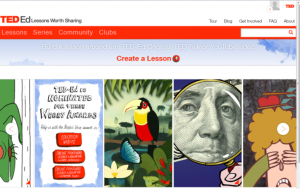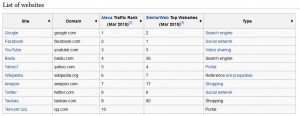The seminar this week was about coming together, evaluating and critiquing the materials we had personally developed. There were a lot of very professional and inspiring examples of what we teachers can produce for ourselves. It was a terrific experience to see what people can do using ‘everyday’ tools such as Word.
The materials that I created and adapted are based on the EAP course I teach for Foundation English. Academic English acknowledges the need for students to understand and describe Processes. The scheme of work asks the teachers to build up the individual language features of process writing: passive grammar, cause and effect language and sequence markers. At the same time, students will be developing their note-talking skills, listening, and writing.
Rationale for the lesson:
This task takes place midway through the course as part of a formative assessment. The students will have performed several tasks of Bloom’s taxonomy in order to build their Knowledge, Comprehension, Application, and Analysis. This is task moves up to the next level and asks students to synthesise the work they have done before. The approach is one that is slightly more focused in order to be assessed with more validity and reliability.
The content is about chewing gum, which I feel is accessible to most students and an unusual food item that will engage the students. Similarly, video is used as input in order to combat the more ‘dry’ paper-based visual representations of processes they may have previously encountered (see adaption post). The use of audio mirrors the actual coursework method.
The weird secret ingredients in chewing gum – Jimmy’s Food Factory – BBC One
The students’ performance of this task will inform them, and the teacher, about their current understanding of the necessary language functions, and skills ahead of the final assessment. Initial feedback and evaluation of their work will be from peer-reviewing the notes. Peer-reviewing attempts to heighten awareness and practise autonomous reviewing of work, but has reliability issues. Therefore, this is followed by a more formal assessment and feedback from the teacher. The final coursework has a clearly defined marking criteria that should be used at this stage too. This will give valid and reliable feedback
The lesson procedure:
The students will discuss the topic and focus on key vocabulary prior to listening. They will watch a short video describing the process of making chewing gum. While they listen they should make notes using the worksheet provided. Once the notes are compiled they will discuss and share their notes with their peers. This will lead into a writing task, where they will write an academic descriptive essay of the process.
First Worksheet Rationale:
Sheet One:
The first paragraph aims to remind students that they are consolidating the listed language functions and skills. This is to make sure that they start to think about what has been covered.
The ‘lesson plan’ section briefly explains the procedure of the lesson. I find that this works well with some students as it gives a structure and helps to consolidate at the end of a lesson as part of a review.
The ‘discuss’ section of the worksheet starts by activating schemata about chewing gum and asks the students to predict what they will hear. This will also start to prepare them for the language needed for the task.
Vocabulary section: chewing gum has some very unique and specialised lexis for its ingredients which might be negative distractors during the listening. Therefore, I feel it is necessary to pre-teach some of them. The portion of the video where the ingredients are described is played as a means of input for the vocabulary and also to get the students use to the video itself.
Sheet Two:
The page has been separated into the main steps that take place during the process. There are some gaps that have been filled as a means of supporting weaker students and are concurrent with the design and layout of coursework. Here a linear vertical structure has been used. This should help the students to follow the process and select the correct information for each stage.
Seminar feedback
The comments from my peers were overall positive. The task had a suitable approach, and the timing and the purpose seemed to match the task they were being asked to do. They felt that the sequence of information on sheet one was counterintuitive and that the lesson plan should be at the top/start. Overall, there was a sense that the worksheet could be more uniform and clearer (some boxes were slightly out of synch etc). On sheet two, they thought that the information given to the students (in the boxes) was over simplifying the task. From a personal perspective, on viewing the designs and effort of other peoples’ worksheets, I felt that my work looked flat and unengaging.
Final Worksheet Changes:
Having followed several of Jason Renshaw’s materials-design tutorials on YouTube, I started to edit and adapt my original worksheet.
Have a look and please give me your feedback.
• I feel that the worksheet is more engaging and professional looking
• Sheet one is clear and framing the different activities and tasks helps to keep focus
• The buttons and layout of sheet one meet the expectations of other materials for ELT. However, one colleague questioned its similarity to the actual coursework worksheet.
• Sheet two has been colour-coded and a horizontal process format used. Overall, it feels easier to follow and is not as dumbed down.
• To offer differentiation, a second sheet two has been created with video exerts used instead of headings. This will help lower level students to track the progress of the process.
Principles and evaluation
The final draft of the worksheet and the lesson as a whole could be seen as a more engaging way to get the students involved in the task.The worksheet’s opening activities will activate the students’ schemata and contextualise what they are about to listen to and make notes about. The worksheet also highlights what they have practised so far and where this activity fits into their progress. This enables them to perceive its relevance and use, as well as giving a balanced approach to the progress they are making for the coursework task. The peer discussion will provide an opportunity for them to use language in order to communicate their ideas, and aid competence in this area.
The video and audio elements would support learners throughout the input. The dual-input functionality of video should contextualise the information more clearly. The note-taking exercise mirrors the demands of the final task (coursework) later in the term. Again this gives it credibility and relevance.
In terms of a pre-evaluation, the worksheet looks engaging as does the use of video for input. Analysis pre-evaluation would stand up to scrutiny because it addresses the need of the student within the macro-context of the course. The timing of the exercise works as part of the students’ progression and what they need to be able to do at this stage of the course. The approaches are both experiential and elicitative because the tasks encourage language discovery and communicative purpose (materials-as-content and materials-as-language). There are two possible sheets to aid differentiation, which addresses the possible needs of the learners.




